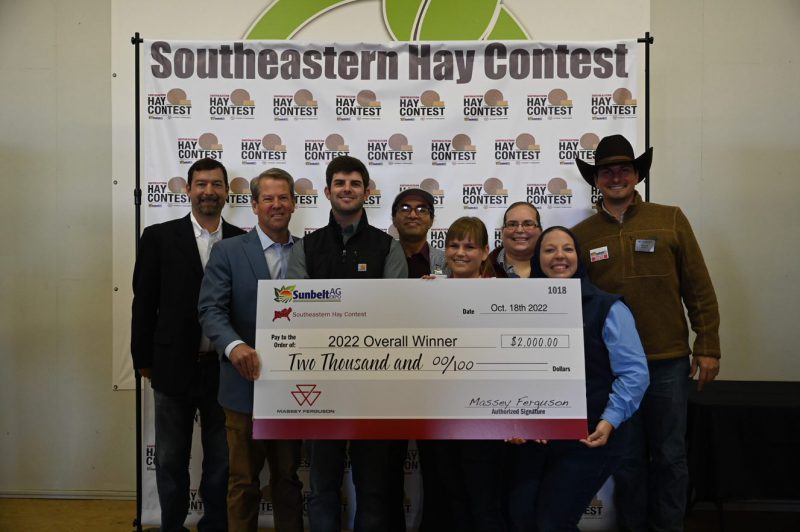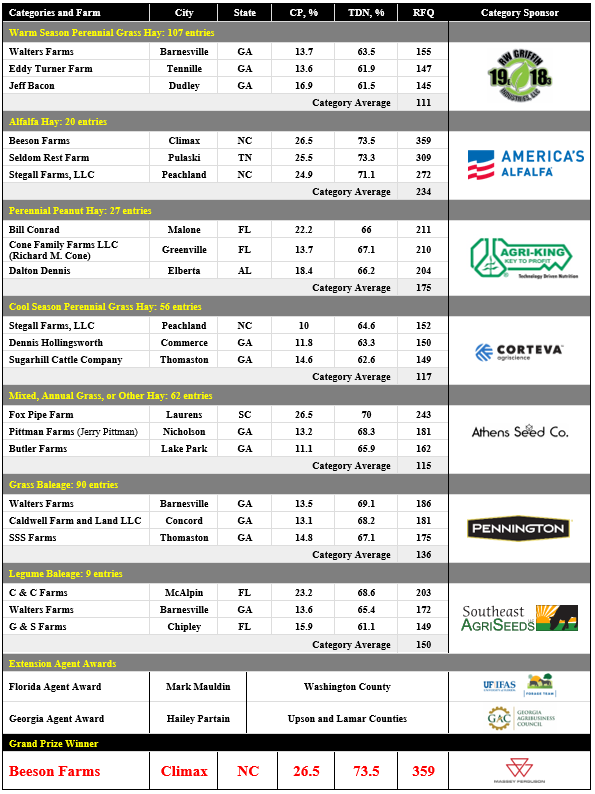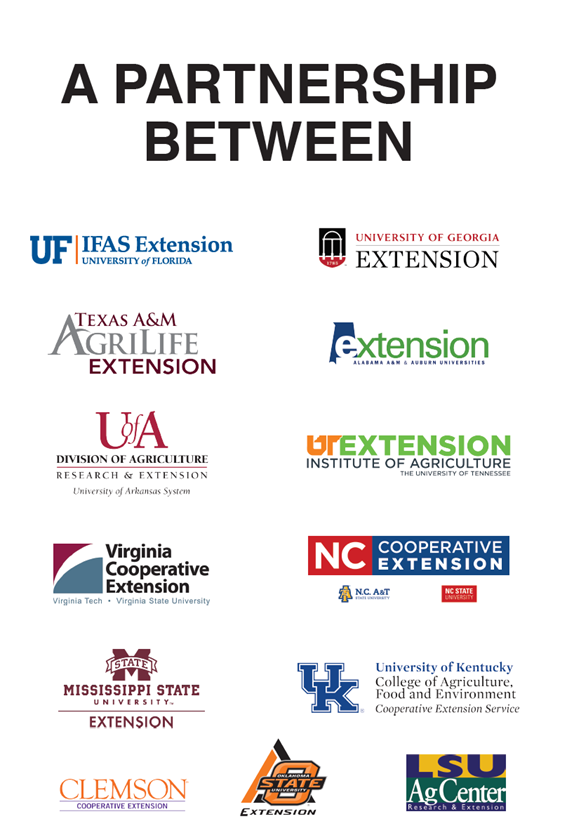Lisa Baxter (UGA), Leanne Dillard (AU), Katie Payne (VT), Marcelo Wallau (UF), and Uttam Saha (UGA)
The Southeastern Hay Contest (SEHC) proudly recognizes forage producers who grow and harvest high quality hay and baleage. Although we are all growing weary of the word “unprecedented”, there is no better word to describe this forage production season. Producers faced many difficult decisions this season with respect to managing high input costs. With record fertilizer and diesel prices, even the simplest task in the hayfield was scrutinized for it’s economic return! We want to praise our local and state extension personnel for aiding in these decisions and educating producers on how best to balance agronomic productivity with economic benefits. On top of financial challenges, Mother Nature threw us a few curveballs in the Southeast this season. Many producers encountered extended periods of drought or heavy rain depending on the time of year, neither conducive for a successful hay harvest. High rainfall periods can also make insect control a challenge, especially for timing applications for the bermudagrass stem maggot and fall armyworms. It is not surprising that hay market reports are illustrating a downward trend in available hay for purchase. This severity of these implications will be felt this fall and winter as livestock producers are forced to make tough choices with regard to supplementation strategies. Hay testing will be more important than ever before!
The SEHC continues to fulfill their mission to bring awareness to the importance of hay testing and of managing feed demands based on nutritive value. The SEHC is celebrating its 18th year with 371 entries coming from nine states across the SE region. Producers can enter the SEHC in 7 categories of hay and baleage: warm season perennial grass hay, alfalfa hay, perennial peanut hay, perennial cool season grass hay, mixed and annual grass hay, grass baleage, and legume baleage. The samples are ranked based on RFQ and the top 3 entries in each category receive a cash prize. The overall winner also receives a choice of the use of a new Massey Ferguson DM Series disc mower or RK Series rotary rake for the 2023 hay production season plus $2,000 in cash!
Despite the aforementioned challenges, we have seen some of the highest relative forage quality indexes (RFQ) ever. This year’s winners are presented on the table below. Our top prize goes to Beeson Farms in Climax, NC, with an alfalfa hay that broke the scale at an RFQ of 357. The SEHC award ceremony was held at the Sunbelt Ag Expo, where winners were announced on October 18th, 2022.
–
–
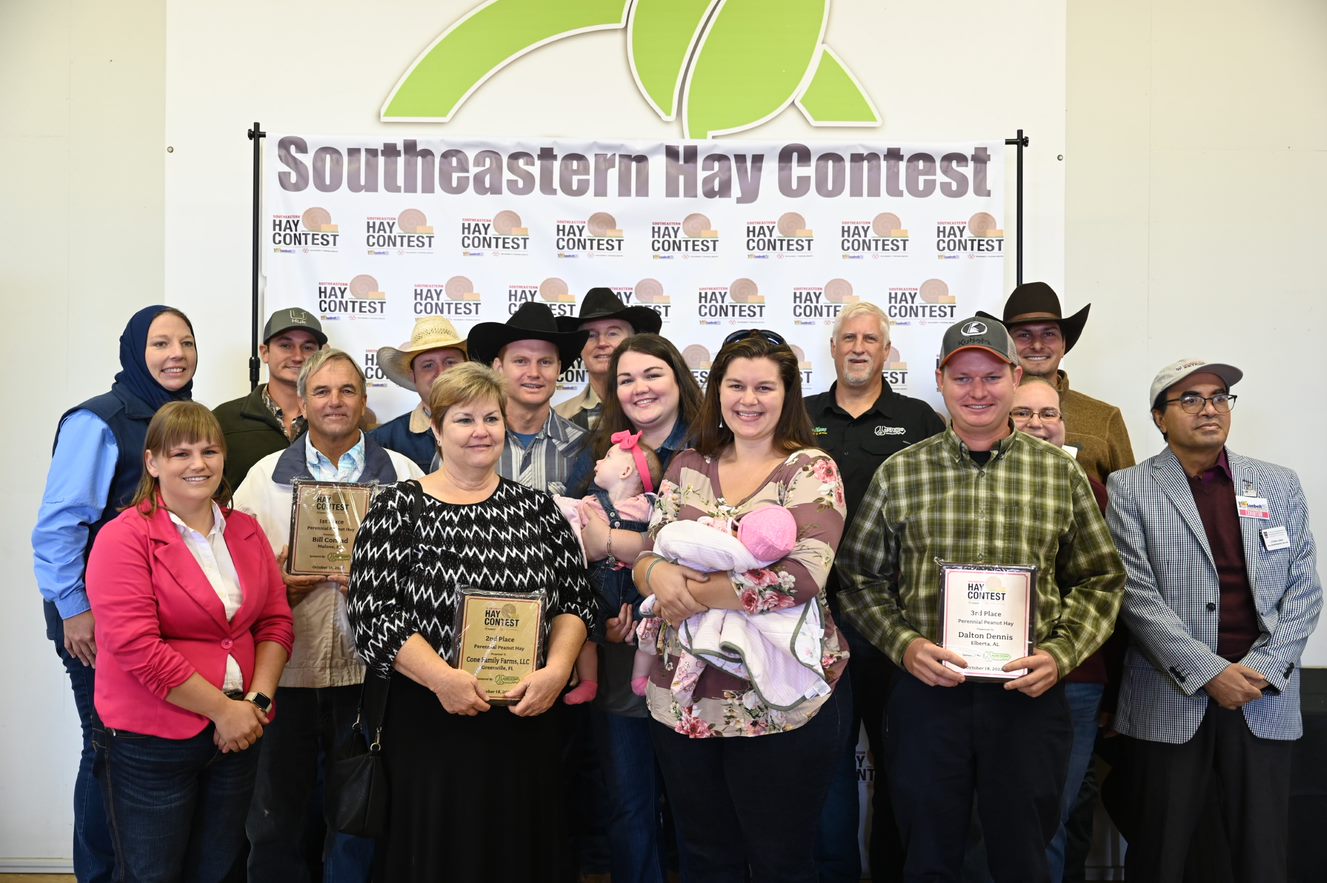
Bill Conrad (left), Malone, FL, won 1st place in the Perennial Peanut Division, followed closely by Cone Farms (center), Madison, FL.
=
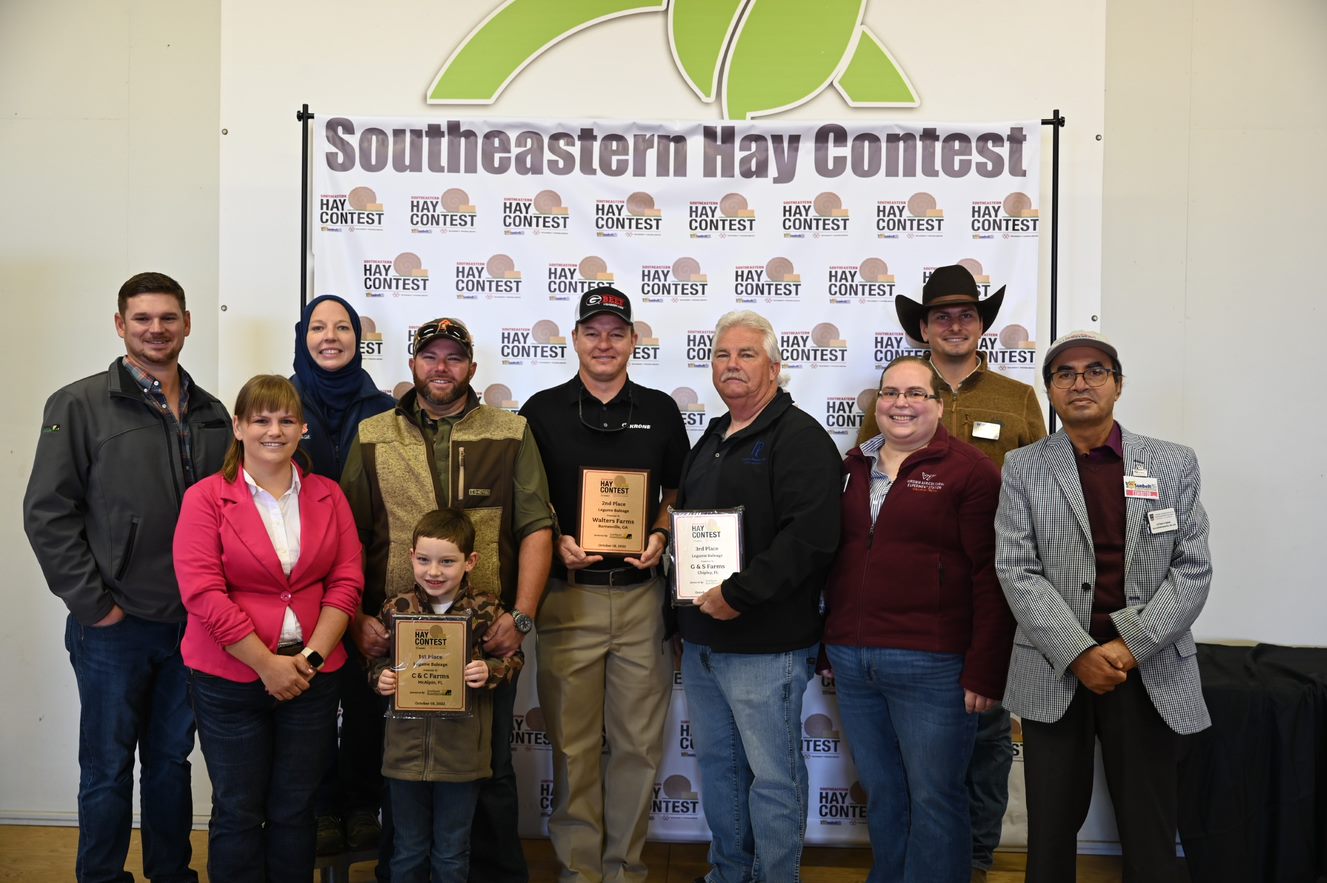
C&C Farms (left), McAlpin, FL, won 1st place in the Legume Baleage Division. G & S Farms (right), Chipley, FL, won 3rd place.
–
The SEHC continues to increase their reach and strengthen their commitment to education. In the upcoming year we aim to host our second SE Hay Shortcourse in Virginia, lead a sponsored session on forage establishment at the American Forage and Grassland Conference, and more! Again, we would like to acknowledge the efforts of our Extension agents, who engage producers and collect samples, and our many sponsors, who support each of the categories. We encourage you to continue the tradition and “prove your hay is the best” by submitting samples to next year’s contest. Submissions are open year-round, check www.sehaycontest.com for more information, or contact your local county agent or forage Extension specialist.
The SEHC is a partnership between Cooperative Extension and private industry, who make this event possible.
=
What is Relative Forage Quality?
Relative Forage Quality (RFQ) is an index used to represent different forages relative to their overall nutritive value (total digestible nutrients) and predicted dry matter intake. The index was developed by researchers at the University of Florida and University of Wisconsin and is consider a better fit for comparing forages (especially southern forages) for accounting for the digestible fiber as determinant of intake. In the past, hay quality prediction equations were based on the fiber concentration of the hay crop. However, forage crops can have similar fiber content but have very different digestibility. For instance, Tifton 85 bermudagrass often has a higher fiber concentration than other bermudagrass varieties, yet it is more digestible. This improved digestibility results in enhanced animal performance but is not reflected just considering traditional forage nutritive value parameters. This value is a single, easy to interpret number that improves producer understanding of a forage’s nutritive quality and helps in establishing a fair market value for the product. Since 2003, hundreds of warm season samples have been used to refine the RFQ equation for bermudagrass and other warm season forages at the UGA’s Feed and Environmental Water Lab in Athens, the official SEHC laboratory.
–
How can Relative Forage Quality help me?
RFQ allows hay producers to easily categorize and price hay lots based on relative quality, and livestock producers to balance supplemental diet based on the quality of the hay being offered. Producers can purchase hay lots depending on its end use. For example, there is little need to feed high-quality hay to livestock that could easily utilize poorer quality forage. Hay with a RFQ of 100 or more can usually be economically fed to maintain beef cows, while hay with an RFQ of 125-150 is adequate for stocker cattle or young growing replacement heifers, and hay with an RFQ of 140-160 is suitable for dairy cattle in the first three months of lactation. It is also easy to see that Relative Forage Quality could provide the framework for a quality hay marketing system. For instance, hay with a RFQ of 155 could conceptually be labeled “premium” hay, while hay with an RFQ of 100 could be labeled “fair”. This simple system could allow producers to price hay consistently and fairly across harvest maturity, fertilization regimes, or plant species (i.e. bermudagrass, bahiagrass, perennial peanut, or tall fescue).
=
For media inquiries and sponsorship opportunities, please contact the SEHC Chair:
Lisa Baxter
University of Georgia
baxterl@uga.edu
–
- Cow Talks: Special Guests Discuss the Impact of H5N1 Avian Influenza on Agriculture - April 25, 2025
- Why is this weed here? Weed Management in Pasture Systems - February 28, 2025
- What to Look for When Selecting Hybrid Corn Varieties for Silage? - January 31, 2025

